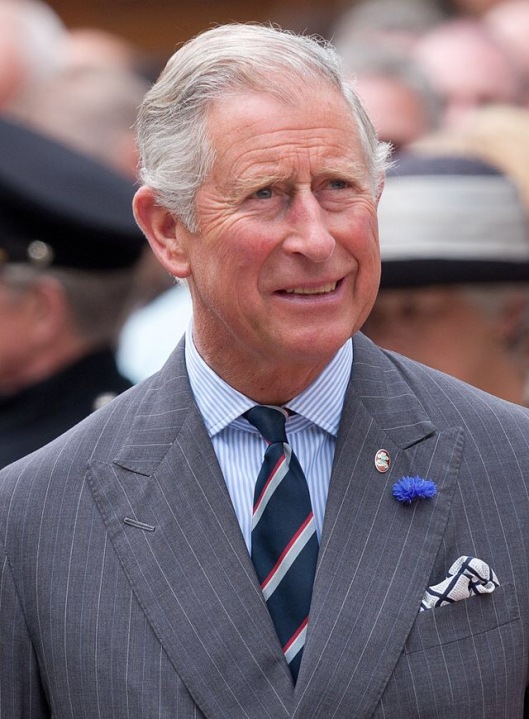Tags
Anne of Denmark, Baron of Renfrew, Duke of Cornwall, Duke of Rothesay, Earl of Carrick, Earl of Chester, King Charles I of England, King Frederik II of Denmark, King James I-VI of England, Lord of the Isles, Prince and Great Steward of Scotland, Prince Henry Frederick, Prince of Wales
Henry Frederick, Prince of Wales, KG (February 19, 1594 – November 6, 1612), was the eldest son and heir apparent of King James I-VI of England, Scotland and Ireland; and his wife Princess Anne of Denmark, the second daughter of King Frederik II of Denmark and Sophie of Mecklenburg-Güstrow.
His name derives from his grandfathers: Henry Stuart, Lord Darnley; and King Frederik II of Denmark. Prince Henry was widely seen as a bright and promising heir to his father’s thrones.
Prince Henry was born at Stirling Castle, Scotland, and became Duke of Rothesay, Earl of Carrick, Baron of Renfrew, Lord of the Isles, and Prince and Great Steward of Scotland automatically on his birth.
King James VI worried that the mother’s tendency toward Catholicism might affect the son. The child’s removal to Stirling caused enormous tension between Anne and James, and Henry remained there under the care of Mar’s family until 1603.
King James VI wrote a note to the Earl of Mar in June 1595 instructing him, in the event of his death, not to deliver Prince Henry to Anne of Denmark or the Parliament of Scotland until he was 18 and gave the order himself.
King James VI of Scotland became King James I of England and Ireland in 1603 at the Union of the Crowns and his family moved south. Anne of Denmark came to Stirling to collect her son, and after an argument with the Prince’s keepers, Marie Stewart, Countess of Mar and the Master of Mar, was allowed to take Prince Henry to Edinburgh on May 28. On the following Sunday Anne took him to St Giles Kirk in her famous silver coach. Anne and Henry arrived in England, at the fortified town of Berwick-upon-Tweed, on June 1.
With his father’s accession to the throne of England in 1603, Prince Henry at once became Duke of Cornwall. In 1610 he was further invested as Prince of Wales and Earl of Chester, thus for the first time uniting the six automatic and two traditional Scottish and English titles held by heirs-apparent to the two thrones.
The prince’s popularity rose so high that it threatened his father. Relations between the two could be tense, and on occasion surfaced in public. At one point, they were hunting near Royston when James criticised his son for lacking enthusiasm for the chase, and initially moved to strike his son with his cane, but Prince Henry rode off. Most of the hunting party then followed the son.
Prince Henry is said to have disliked his younger brother, Prince Charles, and to have teased him, although this derives from only one anecdote: when Prince Charles was nine years of age, Prince Henry snatched the hat off a bishop and put it on the younger child’s head, then told his younger brother that when he became king he would make Prince Charles Archbishop of Canterbury, and then Prince Charles would have a long robe to hide his ugly rickety legs. Prince Charles stamped on the cap and had to be dragged off in tears.
Prince Henry died from typhoid fever at the age of 18, during the celebrations that led up to his sister Elizabeth’s wedding to Prince-Elector Friedrich V of the Palatinate of the Rhine (The diagnosis can be made with reasonable certainty from written records of the post-mortem examination, which was ordered to be carried out in order to dispel rumours of poisoning.) It was reported that his last words were to ask for his sister Princess Elizabeth.
After Henry’s death, the prince’s brother Charles fell ill, but he was the chief mourner at the funeral, which King James (who detested funerals) refused to attend. The body lay in state at St. James’s Palace for four weeks.
On December 17, over a thousand people walked in the mile-long cortège to Westminster Abbey to hear a two-hour sermon delivered by George Abbot, the Archbishop of Canterbury. As Henry’s body was lowered into the ground, his chief servants broke their staves of office at the grave.
Prince Henry’s death was widely regarded as a tragedy for the nation. According to Charles Carlton, “Few heirs to the English throne have been as widely and deeply mourned as Prince Henry.”
Henry’s titles of Duke of Cornwall and Duke of Rothesay passed to Prince Charles, who until then had lived in Henry’s shadow. Four years later Prince Charles, by then 16 years old, was created Prince of Wales and Earl of Chester.
Had the Prince of Wales lived to succeed the thrones, he would have become King Henry IX of England, Scotland and Ireland.








